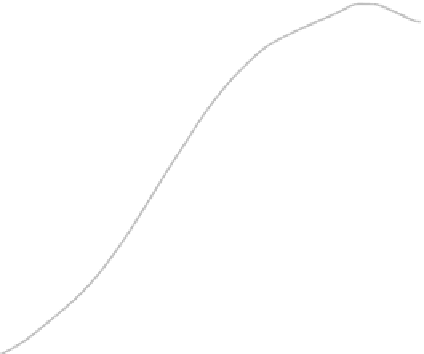Geoscience Reference
In-Depth Information
Mainframe:
One computer, many users
Computer
Personal:
One computer, one user
User
Ubicomp:
many computers, one user
FIGURE 16.3
Fundamental differences among the three paradigms of computing.
(Figure 16.3) (Weiser, 1993). The first wave of computing started with the invention of ENIAC
(Electronic Numerical Integrator and Computer) in 1946 and ended with the appearance of the first
personal computer (PC) in 1983. This period was dominated by mainframe computers, with one
computer serving multiple users. The second wave of computing, from 1983 to present, has been
characterised by PCs with one person and one computer in an uneasy symbiosis, staring at each
other across the desktop without really inhabiting each other's worlds. The third wave of computing,
Weiser (1993) argues, will be dominated by ubicomp (Figure 16.4). Unlike the previous two waves,
ubicomp will operate in a mode where many computers serve one or many individuals, regardless of
where the person is located in the world (Farman, 2012). Instead of interacting across the desktop,
18
Mainframe (one computer, many
people)
PC (one person, one computer)
Ubiquitous computing (one
person, many computers)
16
14
12
10
8
6
4
2
0
FIGURE 16.4
The major trends in computing. (Modified from Weiser, M., The major trends in computing,
http://www.ubiq.com/hypertext/weiser/NomadicInteractive/sld003.htm, 1996).




















































































